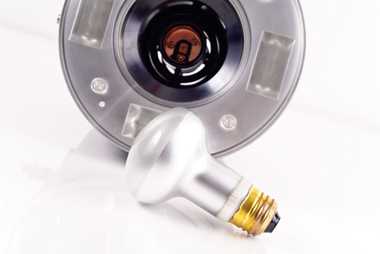Early Models
Early models were advanced with a convex lens to improve image quality and a mirror to reflect the image for viewing. In the early 1800s, a sheet of light-sensitive material was added to create a photographic camera, a precursor to the cameras we know today. In 1826, French inventor Joseph Nicephore Niepce captured an image on a chemical-coated pewter plate, the first known permanent image created by a camera.
Daguerreotype Process
Then in 1839, Louis-Jacques-Mande' Daguerre, a French chemist, developed the daguerreotype process, a direct-positive process that fixes a detailed image over a long exposure time on copper sheet coated with a thin layer of silver. The exposure time was reduced from up to 15 minutes to less than a minute through lens and process improvements. Copies of original daguerreotypes could also be made. Early cameras using this process were popularly sliding boxes made by opticians, instrument makers, and photographers. The sliding box design placed a lens in the front box and a moving, smaller box behind. Focus changed by sliding the second box.
The Birth of Color Photography
The faster and more economical ambrotype or melainotype process invented by Frederick Scott Archer and Peter Fry was used from the 1850s on. These pictures were also direct positives formed in three steps: underexposing collodion on a glass negative, bleaching, and adding a black background. Not long after this development, in 1861, Scottish physicist James Clerk Maxwell created the first color image superimposing three black and white images passed through red, green, and blue filters.

Hand-Held Cameras
Englishman Eadweard Muybridge used new emulsions, allowing almost instant photographs. His photographic sequences captured motion, perhaps the earliest cinematography. Fast image capture allowed for hand-held cameras. Even early on, cameras were used to create promotional and educational materials. Mass-produced box cameras were produced following George Eastman's 1889 invention of rolled film made from cellulose nitrate and the Kodak camera.
Color advances continued. The Lumiere brothers of France developed and patented the autochrome process in 1906. The autochrome process is an additive method recording scenes on composite film in black and white to represent different colors and then adding them together, reconstituting the color. It was the first viable process for color photography. Previously, black and white photographs were colorized by hand painting.
Exploring New Worlds
Photographic techniques continue to advance, allowing underwater photography and high-altitude photography. In the 1940s, MIT professor Dr. Harold Edgerton perfected high-speed stroboscopic photography, which made it possible to capture high-speed events on film.
In the early 20th century, Oskar Barnack, while development manager at Leica, modified a cinema instrument and reduced film negative format to invent the first 35 mm camera. These smaller format film negatives were exposed and used to create enlarged photographs.
By 1946, the world had its first photo from space, a grainy photo of Earth taken by a 35mm camera strapped to a missile. Then Photogrammetry Corporation and the National Geographic photo lab revolutionized underwater photography with the OceanEye in the 1960s.
Modern Photography
Triacetate film followed Eastman's cellulose nitrate rolls. This new film was more stable and, importantly, not flammable. T-grain emulsion films are still used today, providing photographs with higher resolution and, consequently, sharper images.
Photographic prints have advanced as well. Linen rag papers coated with gelatin emulsion were replaced with resin-coated papers, but problems with fading persisted. Kodachrome color film was a development that allowed prints to last 50 years or more. Today's techniques and printing methods should allow color prints to last for over 200 years.
Edwin Herbert Land, an American physicist, invented a one-step developing and printing process to create instant photography. Land's technology was used in the Polaroid camera, first available in 1948.
Photography took another major leap in 1984 with the advent of digital photography first demonstrated by Canon. Just two decades ago, in 1991, Kodak sold the first publicly available digital camera. The expensive Nikon F-3 camera body with digital sensor was sold to professional photographers. In a short time, the quality, availability, and diversity of digital cameras has exploded, as well as computer and printing techniques to enhance and exhibit the captured images.
Modern photography is a combination of all the scientists, processes, cameras, and people that have come before, allowing us to see and capture the world in a new way. A photography degree is the beginning of joining this history.